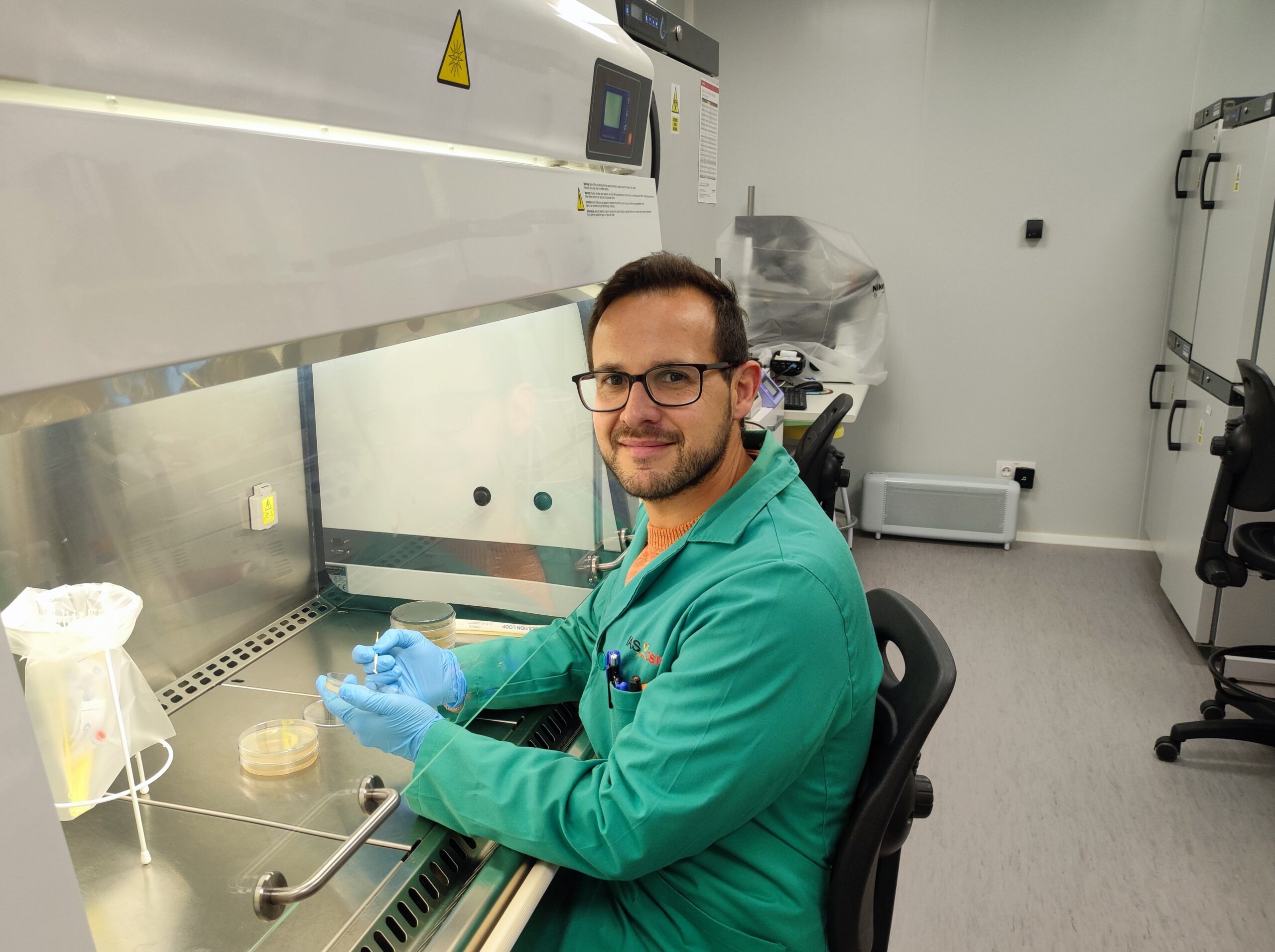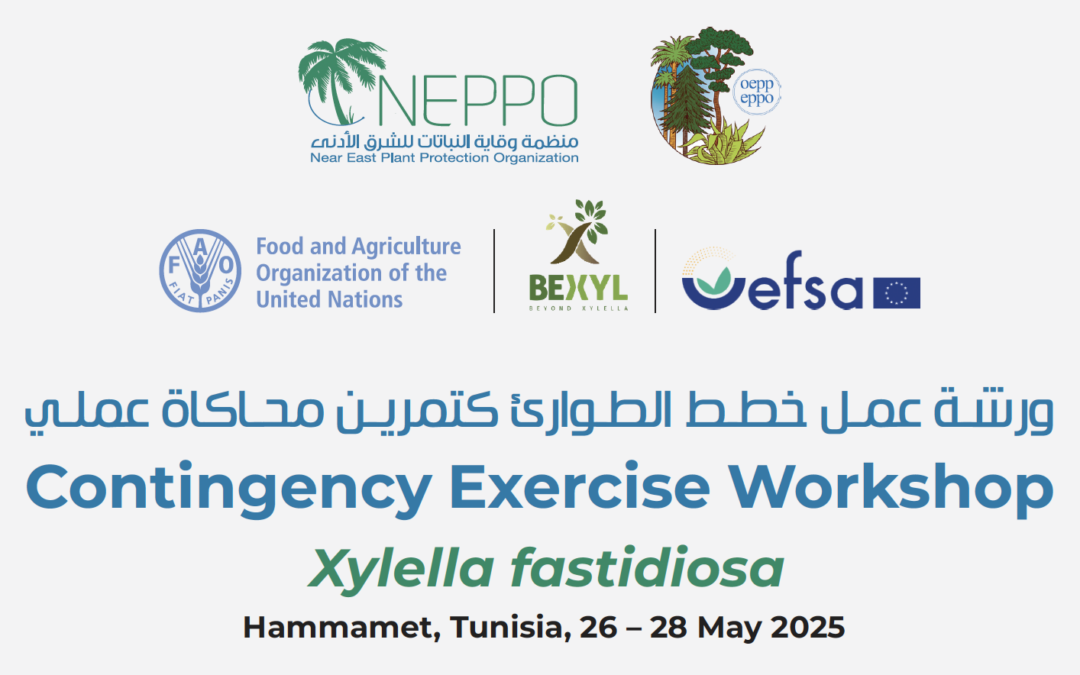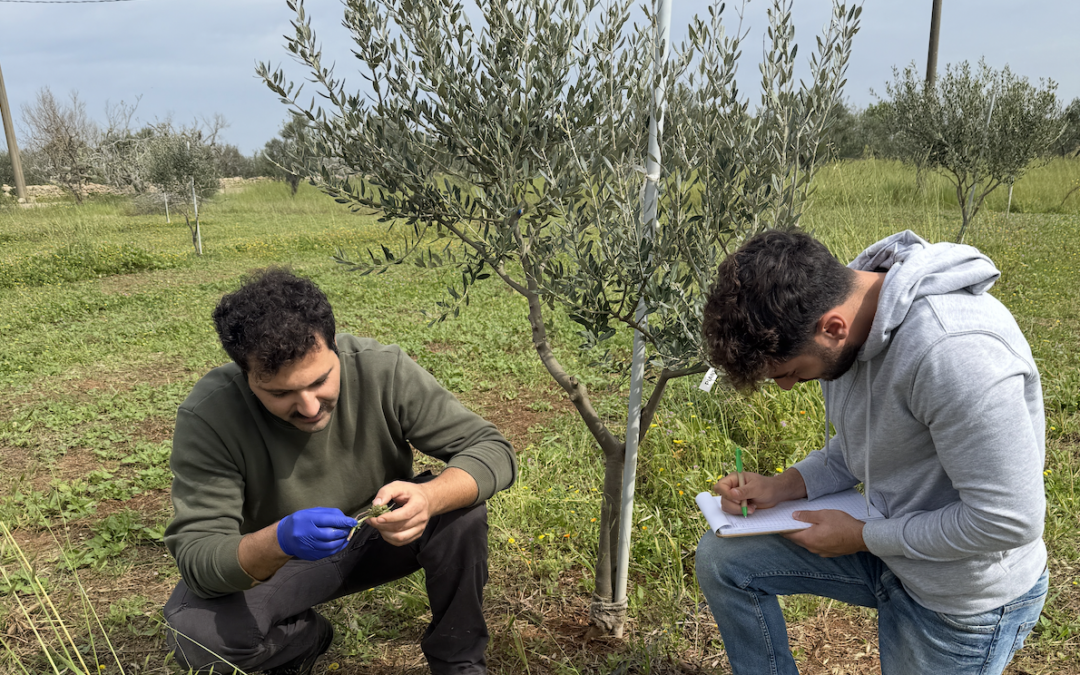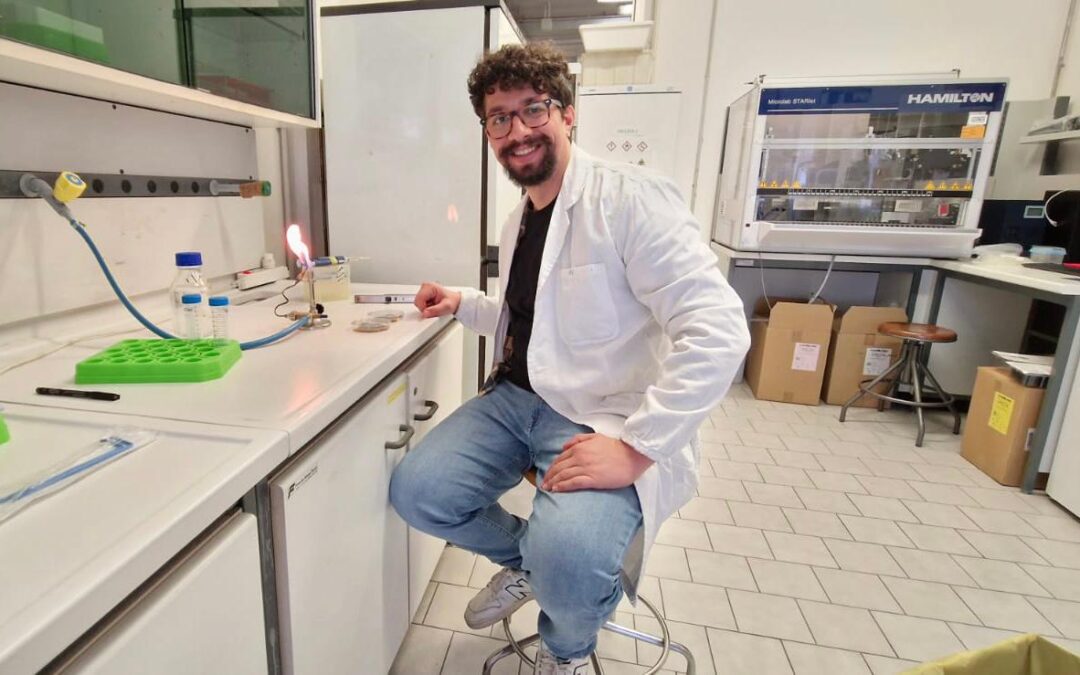According to Miguel Roman Ecija, plant health is crucial for sustainable food production. He is an agricultural engineer with a master’s degree in biotechnology and is currently pursuing a PhD at the Institute for Sustainable Agriculture (IAS-CSIC) in Córdoba, Spain. In May, he plans to defend his PhD Thesis entitled “Biology, ecology and epidemiology of Xylella fastidiosa in Spain”.
Why plant health?
I strongly believe that plant disease management is a key pillar of sustainable food production. For this reason, much of my professional career—both in the private sector and academia—has been mostly dedicated to plant health.
My journey into plant health began during my undergraduate studies, where I first explored topics like pathogen and insect life cycles, disease development, and weed science. These subjects quickly became some of the most fascinating aspects of my academic experience. This growing interest inspired me to focus my bachelor’s thesis on the evaluation of Blumeria graminis pathogenicity in a wheat collection, a pathogen causing downy mildew, a widespread disease in all wheat-growing areas.
Which academic pathway led you to study X. fastidiosa?
Well, looking back, I think it was one of those life coincidences—a series of unplanned events that brought me here. A year before starting my PhD, I moved to Córdoba to work at the University, where I gradually connected with researchers pursuing their PhDs at IAS-CSIC. I had a strong interest in embarking on my own PhD journey, and when I learned that Dr. Blanca Landa and Dr. Juan Antonio Navas-Cortés had an open position, my colleagues encouraged me to reach them. I was fortunate to be given the opportunity to study X. fastidiosa, a bacterium that at that time had only just begun to emerge in different parts of Europe, following the devastating outbreak in Italy.
What’s your thesis about?
My thesis addresses several aspects of epidemiology of X. fastidiosa diseases, which I like to explain through the well-known concept of the disease triangle, studying both the bacterium’s biology and ecology, its interactions with environmental factors, and its effects on the host plants. The main goal of my PhD is to advance the understanding of X. fastidiosa by addressing three key aspects: the phenotypic characterization of European X. fastidiosa genotypes, assessment of their pathogenicity across different host plants, and the evaluation of the effects of temperature on bacterial growth, biofilm formation and cell survival.
What are your main accomplishments?
So far, my research has provided new insights into the phenotyping and genetic variability of European X. fastidiosa strains, as well as some of their potential mechanisms of pathogenicity and virulence. For instance, we have observed significant variability in pathogenicity and virulence depending on both the inoculated strain and the host plant species.
Additionally, we have developed an early detection system using proximal sensors capable of distinguishing between healthy and infected plants, in the absence of visible symptom development, based on vegetation spectral indices. I have also modelled the bacterial growth and biofilm formation as a function of temperature, and complemented this information with the determination of the relationships between temperature patterns on xylem vessels and roots of olive and almond trees in relation to air temperature, which may contribute to a deeper understanding of how the environment may influence pathogen survival under Mediterranean type climates.
What have been the main obstacles in your research?
I would say that the most challenging aspect has been working directly with the bacterium in vitro, especially for being a highly regulated quarantine plant pathogen, which imposes strict biosafety protocols on experiments. In the beginning, it was particularly difficult since we were setting up the biosafety laboratory at IAS-CSIC while still learning how to manipulate X. fastidiosa in vitro. Besides, each strain presents its unique challenges, as growth depends on several factors such as the subspecies, the host plant from which it was isolated, and even the artificial culture medium used. This makes every experiment, in vitro and planta, an ongoing challenge.
How did you manage to hurdle them?
I was fortunate to conduct a research stay abroad in Leonardo de la Fuente’s lab at Auburn University, Alabama, at the beginning of my PhD. Thanks to him and his team, we gained the foundational knowledge necessary to work with this fastidious organism in our laboratory. I still remember spending countless hours in the early stages of my PhD examining plates, observing colonies under the microscope, and getting familiar with the bacterium. With time, as I gained experience, I developed my own methods and approaches to handle it. Also, I feel fortunate to have colleagues at IAS-CSIC who help me in all my daily work; they make all the tasks much easier.
What is your plan after the thesis?
After completing my PhD, I aim to continue working in plant pathology. I am particularly interested in epidemiological modelling and host-pathogen interactions for the early detection of the infection. Ultimately, I hope to contribute to the development of integrated management strategies for emerging plant diseases, bridging fundamental research with practical applications to enhance disease prevention and control.practical applications to enhance disease prevention and control.








